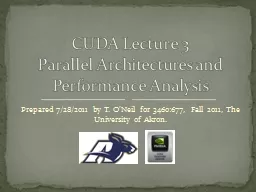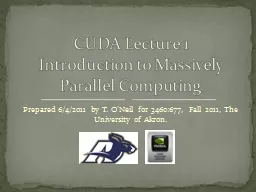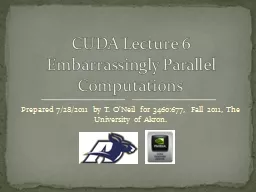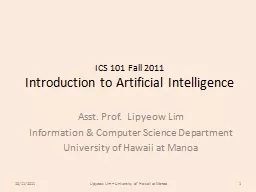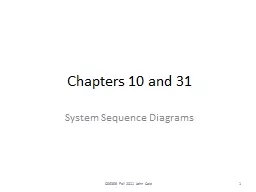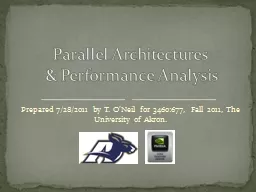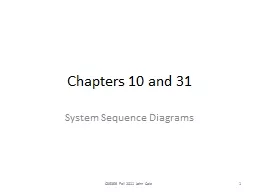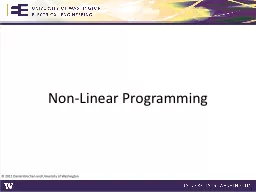PPT-Prepared 7/28/2011 by T. O’Neil for 3460:677, Fall 2011, The University of Akron.
Author : karlyn-bohler | Published Date : 2018-11-07
CUDA Lecture 3 Parallel Architectures and Performance Analysis Conventional Von Neumann architecture consists of a processor executing a program stored in a main
Presentation Embed Code
Download Presentation
Download Presentation The PPT/PDF document "Prepared 7/28/2011 by T. O’Neil for 34..." is the property of its rightful owner. Permission is granted to download and print the materials on this website for personal, non-commercial use only, and to display it on your personal computer provided you do not modify the materials and that you retain all copyright notices contained in the materials. By downloading content from our website, you accept the terms of this agreement.
Prepared 7/28/2011 by T. O’Neil for 3460:677, Fall 2011, The University of Akron.: Transcript
Download Rules Of Document
"Prepared 7/28/2011 by T. O’Neil for 3460:677, Fall 2011, The University of Akron."The content belongs to its owner. You may download and print it for personal use, without modification, and keep all copyright notices. By downloading, you agree to these terms.
Related Documents

